Research
I am a post-doctoral fellow at the Observatoire de la Cote D'Azur in Nice, France studying planetesimal dynamics. Present research focuses on the formation mechanisms of binaries in the Solar System and the physical properties of the systems. In the past I have studied various topics related to small body dynamics and been involved in a couple observing projects (Deep Impact and Irregular Jovian Satellites).
Binary Asteroid Formation
|
Our models of tidal disruption have shown that it can only account for a small fraction of the observed NEA binary asteroids. With this result, we have focused our efforts on examining the possibility that the thermal YORP-effect may be capable of creating binary asteroids. This effect has recently been measured to change the spin period of an asteroid, and it has been suggested could actually spin-up an asteroid until it "bursts" or simply loses some mass off its surface. Our work focused on testing the results of slowly spinning-up rubble pile asteroids constructed with different kinds of internal structure, where some behave like piles of rocks on Earth, and others behave very similar to fluids. The results were very nice, with the non-fluid rubble piles producing binary asteroids with properties very similar to those we observe among small asteroids. This is an ideal explanation for the formation mechanism of these observed binaries, and understanding their formation tells us a lot about their physical properties. First, the asteroids bulk structure is quite similar to well-understood granular mechanics. Second, the minor collisions of the material ejected off the asteroid's surface must be quite dissipative, in order to accrete a satellite in orbit. Lastly, the flow of material on the surface of the asteroid during the process may have observable effects on the surface regolith -- with implications for sample return missions. This work was published in Nature. |
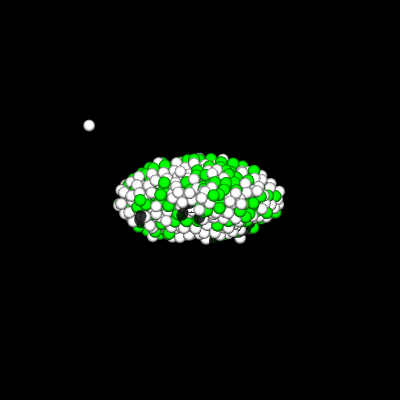 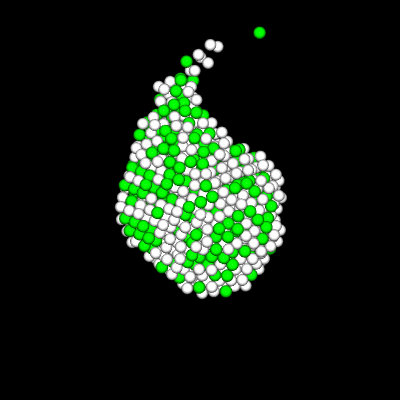
|
Tidal Disruption
|
Recent progress from N-body simulations has produced orbital and physical properties of binary asteroids formed via tidal disruption. These simulations, over 110,000 to date, run on the beowulf cluster at the Department of Astronomy. The properties studied from the simulations are; Of specific interest are the properties best constrained by current observations, separation and size ratio of NEA binaries (for a very complete listing of asteroidal binaries, see the Johnston archives). The simulated distribution of separation, when weighted by discvoery liklihood, matches the shape of the observed distribution quite well.
Preliminary results were presented at DPS in Louisville (#32.20),
and more recent results were published in The final part of this project included the creation of a steady-state model of the NEA binary population as produced by tidal disruptions. The results showed that despite the healthy production of binaries by this mechanism, they were evenb more effectively separated during subsequent planetary encounters.
|
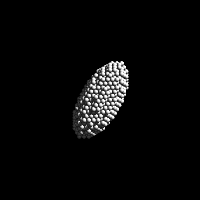 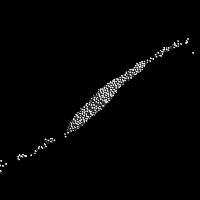 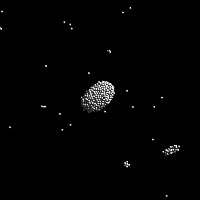
|
Small Main Belt Asteroids
|
Starting in the fall of 2004 I began an observing program through the UMD-KPNO consortium. The program entails lightcurve observations of small (D < 5km) Main Belt asteroids, in order to constrain the distribution of spin and shape characteristics of this group of bodies. Also of interest is the binary percentage within this subset of the MBAs, which may shed light on possible formation scenarios for all binary asteroids. | 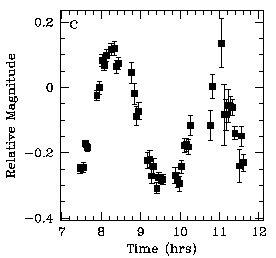 |
Deep Impact
|
On July 4th the impactor from the Deep Impact mission struck comet 9P/Tempel 1. As part of this mission I observed the impact from the San Pedro Martir observatory near Ensenada Mexico. The observations made were optical photometry using the 1.5m telescope in the broadband colors BVRI. As well optical spectroscopy was done on the 2m telescope between 400-600 nm. |
Saturn's F Ring
|
Previously I have simulated collisions on planetesimals in strong tidal fields, modeling particle interaction and collision in Saturn's F ring. This study was presented as a poster at the 2003 DPS meeting (abstract #526). | 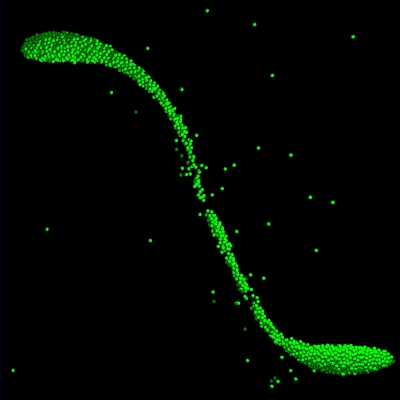 |
Side Projects
|
To accomodate the great need for computing power in the Astronomy Department, I and two fellow graduate students, Kayhan Gultekin and Zoe Leinhardt, created a network desktop computers to provide free computing time. This network, VAMPIRE, is a series of desktop computers in the department running a job managing program called CONDOR. This network identifies unused computers and runs jobs on them harnassing on average 14 hours of computing time per machine. The network has grown to almost 20 machines. |
SL9
|
My second year project at Maryland consisted of a detailed model of the Shoemaker-Levy 9 breakup at Jupiter in 1993. More to come on this, it is a project still very much underway. |
Photometry
|
At the University of Notre Dame I completed a project with Prof. Terry Rettig studying the photometric properties of the irregular jovian satellites. This paper enforced the suspicion that the two main groups (prograde and retrograde) are likely of differing origin. This study has renewed interest as the total number of irregular satellites in Jupiter's system has grown enormously in recent years, with many groups of moons appearing.
The summer of 1999 I was student in the Northern Arizona REU
(Research Experience for Undergraduates). I did photometry on
irregular Uranian satellites (Caliban and Sycorax), as well as a
distant inactive comet (P/Neujmin 1). My advisor that summer was Prof. Steve Tegler . |
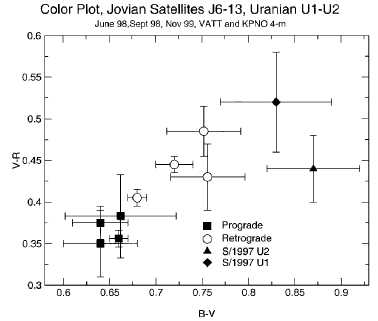 |
